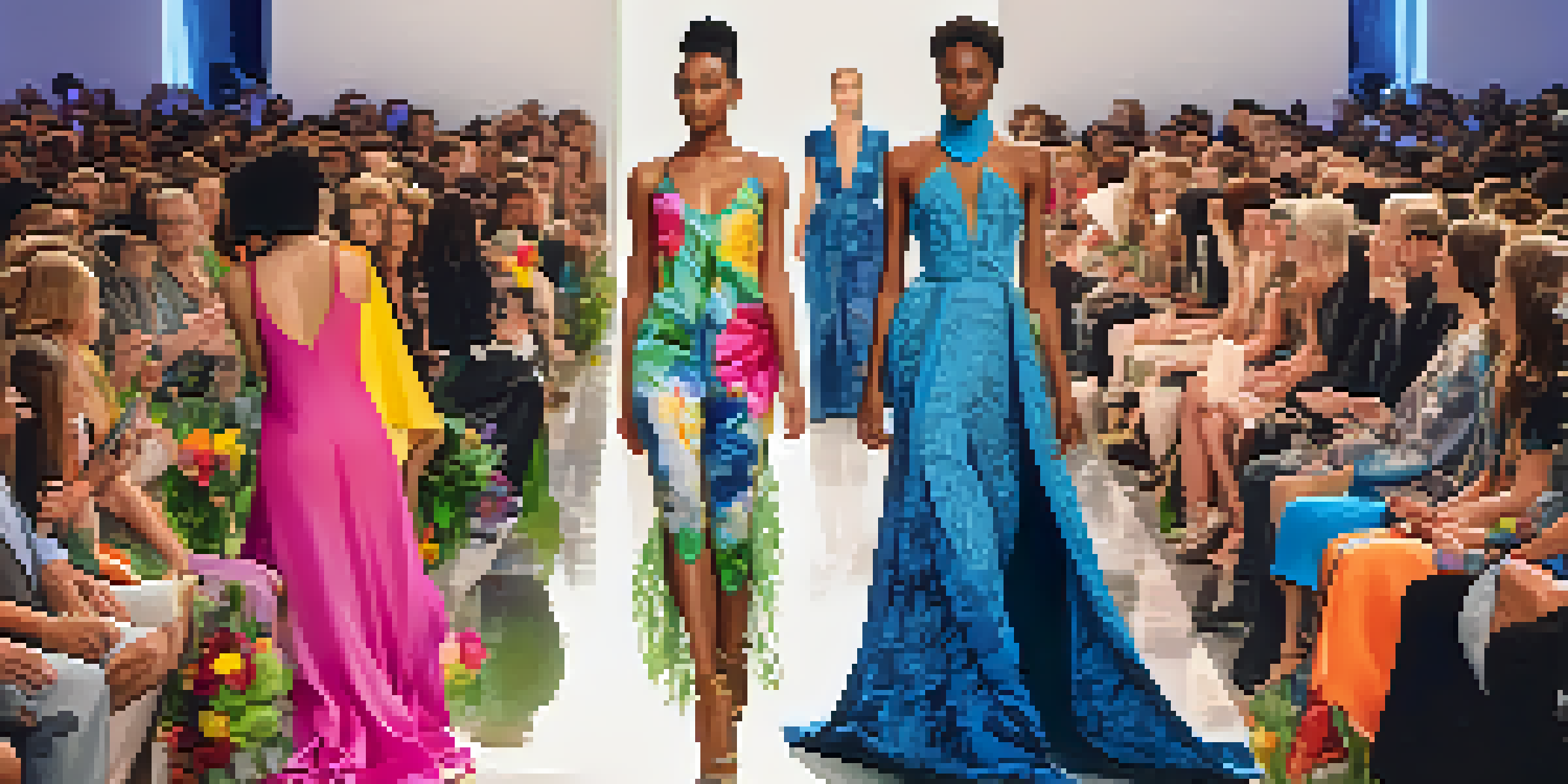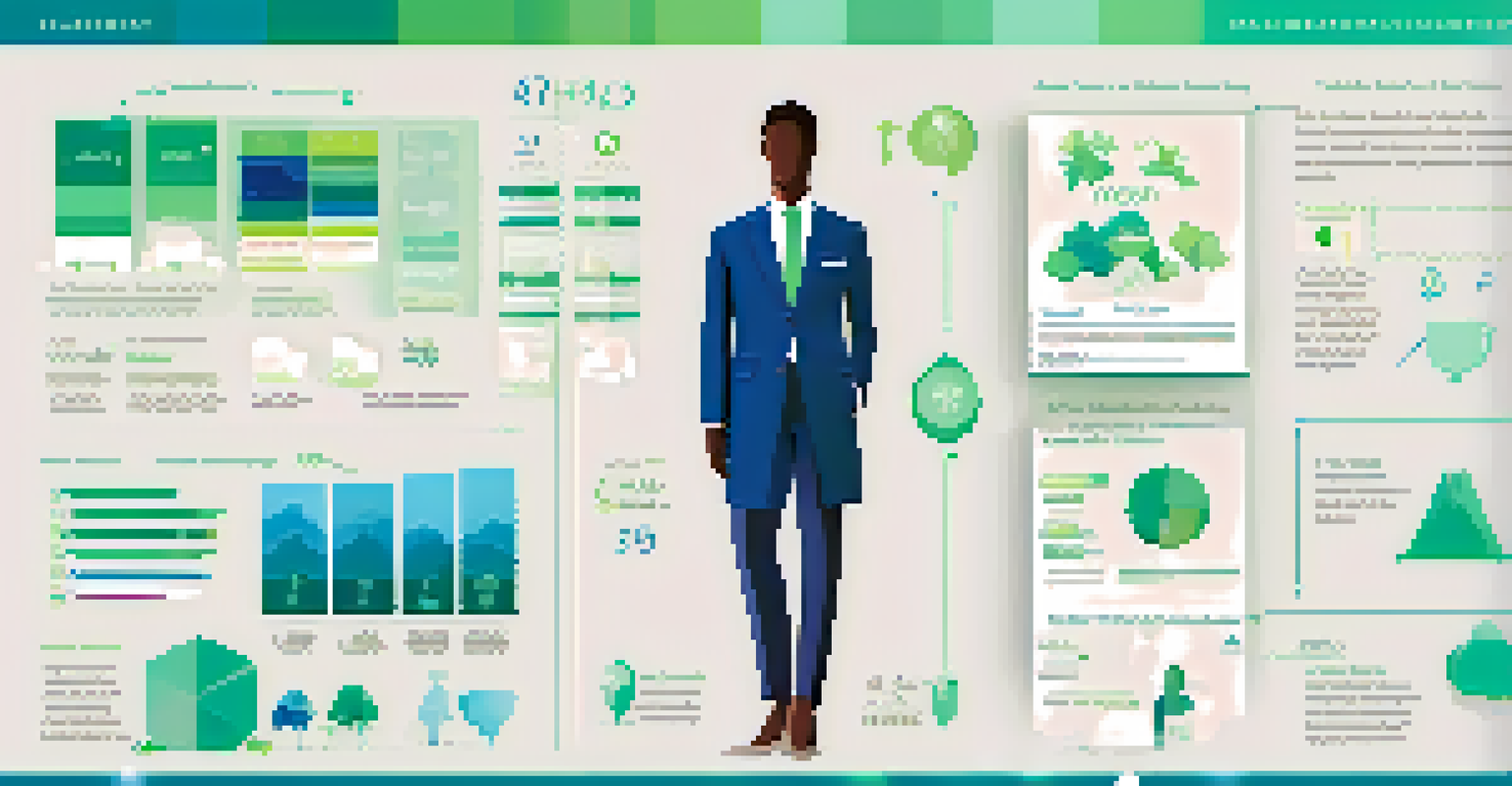Fashion Forecasting: How AI Tools Are Changing the Game

Understanding Fashion Forecasting and Its Importance
Fashion forecasting is the art and science of predicting future trends in clothing, accessories, and styles. It helps brands understand what consumers want, allowing them to design and produce items that resonate with their target audience. In an industry where timing is everything, accurate forecasting can make or break a collection's success.
Fashion is the armor to survive the reality of everyday life.
Traditionally, fashion forecasting relied on intuition and experience, often involving extensive research into cultural shifts, historical trends, and consumer behavior. However, this process could be subjective and prone to errors. With the introduction of AI tools, the landscape is shifting toward more data-driven methodologies that enhance accuracy and efficiency.
By analyzing vast amounts of data from social media, sales reports, and even weather patterns, AI algorithms can identify emerging trends much faster than human forecasters. This shift not only improves the relevance of predictions but also allows brands to respond more swiftly to changing consumer preferences.
The Role of AI in Analyzing Consumer Behavior
One of the most significant advantages of AI in fashion forecasting is its capability to analyze consumer behavior on a granular level. By tracking online shopping habits, social media interactions, and even search engine queries, AI can provide insights into what styles are gaining traction. This data-driven approach helps brands tailor their offerings to meet specific consumer demands.

For instance, if an AI tool detects a surge in searches for sustainable clothing, brands can pivot their strategies to include more eco-friendly options. This not only aligns with consumer preferences but also positions brands as forward-thinking leaders in sustainability. The ability to pivot quickly is especially crucial in an industry that's constantly evolving.
AI Transforms Fashion Forecasting
AI tools enhance the accuracy and efficiency of predicting fashion trends by analyzing vast amounts of consumer data.
Moreover, AI tools can segment audiences based on their preferences, allowing brands to create highly targeted marketing campaigns. This means that customers receive messages that resonate with their individual tastes, increasing engagement and sales potential.
Predicting Trends Using Big Data and Machine Learning
Machine learning, a subset of AI, plays a pivotal role in analyzing big data to predict fashion trends. By ingesting historical data and applying algorithms, these systems can recognize patterns that humans might overlook. For example, machine learning can help identify that floral prints are trending during specific seasons or events, guiding designers in their creative processes.
The best way to predict the future is to create it.
These predictive models can also simulate various scenarios to forecast how trends might evolve over time. This capability allows brands to prepare for shifts in consumer preferences well in advance. Think of it as having a crystal ball that reveals not just what styles are popular now but what will likely capture attention down the road.
The integration of machine learning into fashion forecasting is invaluable, as it empowers brands to make informed decisions about their collections and marketing strategies. This forward-thinking approach not only enhances their competitive edge but also fosters a more proactive mindset in the ever-changing fashion landscape.
Enhanced Visual Recognition in Fashion Forecasting
AI's ability to analyze visual content is another game-changer in fashion forecasting. By employing image recognition technology, AI can scan thousands of images from runway shows, street style, and social media to identify emerging trends. This technology can distinguish colors, patterns, and styles, providing brands with a comprehensive view of what's gaining popularity.
For example, if a particular shade of blue is frequently seen in influencer posts, AI can flag this as a trending color, prompting brands to incorporate it into their upcoming collections. This visual recognition capability not only speeds up the forecasting process but also enhances its accuracy, as it relies on actual consumer behavior rather than assumptions.
Personalized Shopping Experiences
AI enables brands to tailor shopping experiences by recommending products based on individual consumer preferences.
Furthermore, this technology can help brands understand how different demographics engage with fashion visually. By analyzing the types of images that resonate with various audiences, companies can create more appealing marketing materials and product offerings tailored to specific consumer segments.
AI Tools in Supply Chain and Inventory Management
Beyond forecasting trends, AI tools are also making waves in supply chain and inventory management. By predicting demand for certain styles, brands can optimize their production schedules and minimize waste. This means fewer unsold items piling up in warehouses, which is a win-win for both the environment and the brand's bottom line.
For instance, if AI forecasts a high demand for a particular style based on social media buzz, brands can ramp up production ahead of time. This proactive approach ensures that they have enough stock to meet consumer demand without overproducing, thus maintaining a healthy balance.
Additionally, AI can help identify the most efficient distribution channels, allowing brands to get their products to market faster. This agility in the supply chain not only enhances customer satisfaction but also strengthens a brand's reputation in a fast-paced industry.
Personalizing Shopping Experiences with AI
AI tools are revolutionizing the way consumers shop by personalizing their experiences. Through data analysis, brands can recommend products based on individual preferences, shopping history, and even browsing behavior. This level of personalization not only enhances customer satisfaction but also encourages repeat business.
For example, if a shopper frequently buys bohemian styles, an AI-driven recommendation engine might suggest similar items or even alert them when new arrivals in that style are available. This tailored approach makes shopping more enjoyable and relevant, fostering a deeper connection between the brand and its customers.
Human-AI Collaboration in Design
The future of fashion forecasting combines human creativity with AI insights to create innovative designs that resonate with consumers.
Moreover, personalized experiences can extend beyond product recommendations to include customized marketing campaigns. By sending targeted emails or promotions based on consumer behavior, brands can engage their audience more effectively and drive conversions.
The Future of Fashion Forecasting: A Blend of Human and AI Insights
As AI continues to evolve, the future of fashion forecasting appears to be a harmonious blend of human intuition and AI insights. While AI can analyze vast amounts of data and recognize patterns, human creativity and cultural understanding remain irreplaceable. The best results often come from leveraging the strengths of both.
Fashion designers and forecasters can use AI-generated data to inform their creative processes, ensuring that their designs align with current trends while maintaining a unique perspective. This collaborative approach enhances the overall quality of fashion forecasting, leading to innovative designs that resonate with consumers.

Ultimately, the evolution of fashion forecasting through AI tools signifies a new era for the industry. By embracing technology while honoring the artistry of fashion, brands can navigate the complexities of consumer preferences and create collections that truly resonate.